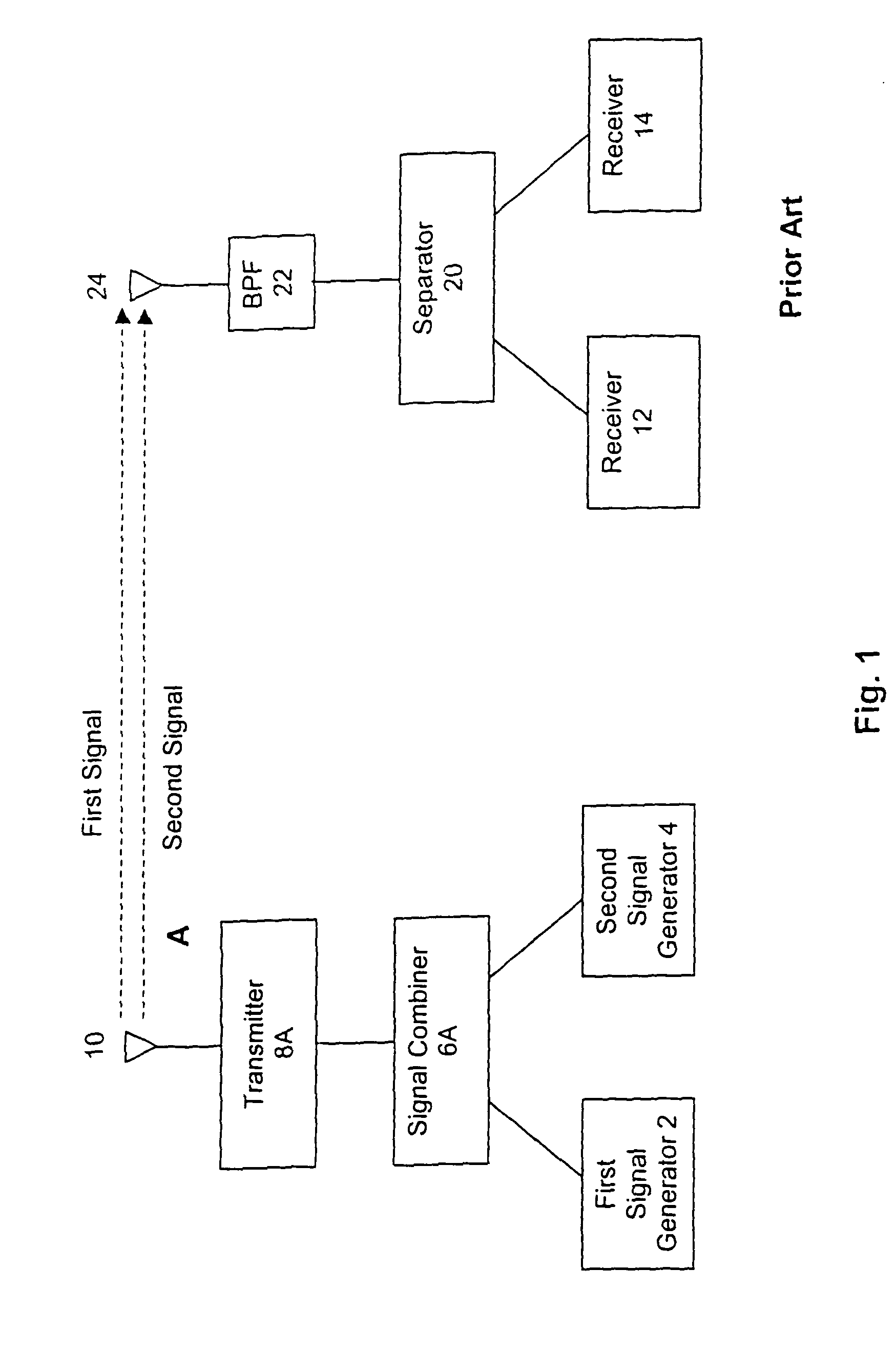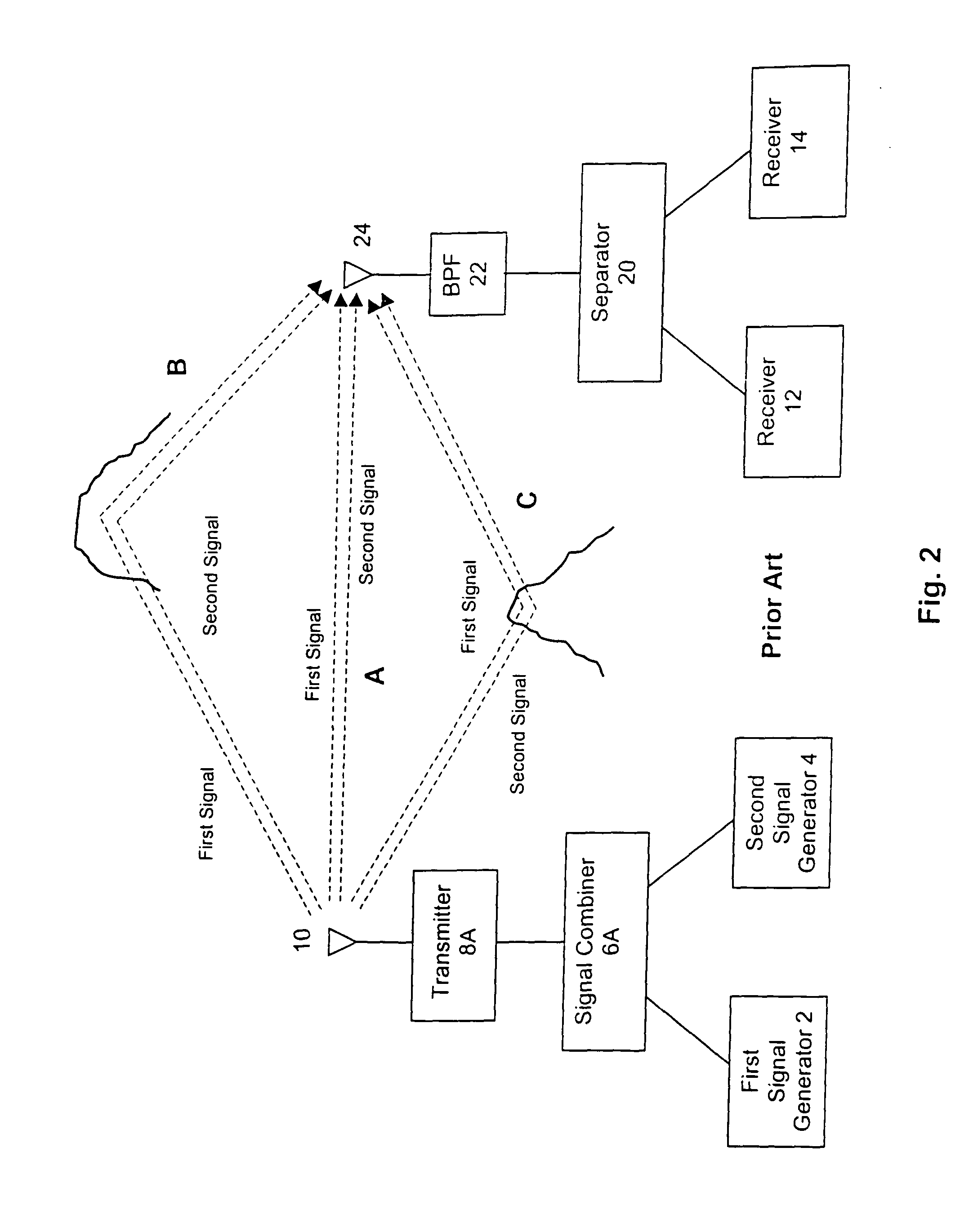Interference reduction for multiple signals
a multi-signal, interference reduction technology, applied in the field of radio communication using an adaptive array, can solve the problems of severe degrade reception, different time delays and phase shifts, distortion of amplitude, phase and frequency, etc., to reduce multi-path, reduce multi-path and other shared interference, and reduce the degradation of one signal performance
- Summary
- Abstract
- Description
- Claims
- Application Information
AI Technical Summary
Benefits of technology
Problems solved by technology
Method used
Image
Examples
Embodiment Construction
[0022]The purpose of the present invention is to use one adaptive array to improve the performance of two receivers by reducing interference (multipath or other interference that is shared) when the two radio signals occupy the same frequency channel, are transmitted from same antenna, received by the same antenna or antenna array, and are separable. In the present invention, interference other than multipath means interference shared by both radio signals.
[0023]FIG. 1 shows a prior art diagram of the transmission, propagation A, and reception of first and second radio signals. They use the same transmitter 8A, transmit antenna 10 and receive antenna 24, and occupy the same frequency channel. The signals are generated by the first signal generator 2 and second signal generator 4 and coupled to the inputs of signal combiner 6A. The two signals are combined by combiner 6A in a manner that permits their separation at the receiver (discussed below). They are transmitted by the same tran...
PUM
 Login to View More
Login to View More Abstract
Description
Claims
Application Information
 Login to View More
Login to View More - R&D
- Intellectual Property
- Life Sciences
- Materials
- Tech Scout
- Unparalleled Data Quality
- Higher Quality Content
- 60% Fewer Hallucinations
Browse by: Latest US Patents, China's latest patents, Technical Efficacy Thesaurus, Application Domain, Technology Topic, Popular Technical Reports.
© 2025 PatSnap. All rights reserved.Legal|Privacy policy|Modern Slavery Act Transparency Statement|Sitemap|About US| Contact US: help@patsnap.com



